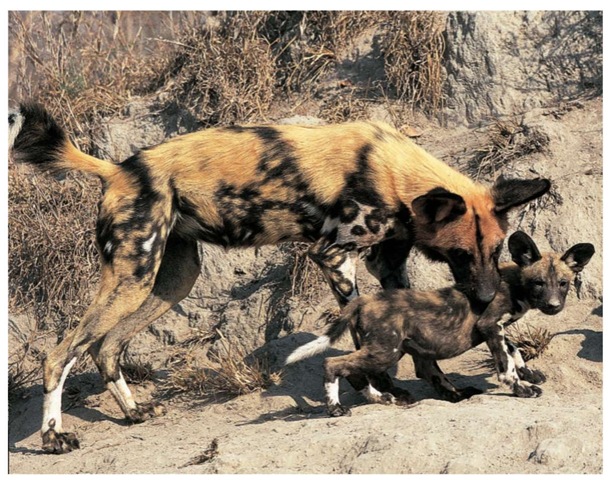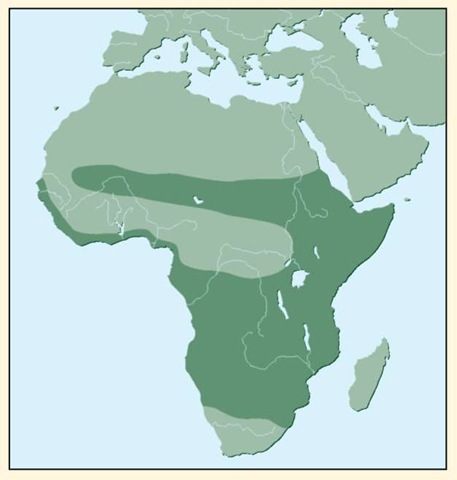Lycaon pictus
Phylum: Chordata
Class: Mammalia
Order: Carnivora
Family: Canidae
Status: Endangered, IUCN Endangered, ESA
Range: Algeria, Angola, Benin, Botswana, Burkina Faso, Burundi, Cameroon, Central African Republic, Chad, Congo, Congo Republic, Cote d’lvoire, Eritrea, Ethiopia, Gabon, Gambia, Ghana, Guinea, Kenya, Malawi, Mali, Mozambique, Namibia, Niger, Nigeria, Rwanda, Senegal, Sierra Leone, Somalia, South Africa, Sudan, Swaziland, Tanzania, Togo, Uganda, Zambia, Zimbabwe
Dog, African wild
Lycaon pictus
Description and biology
The African wild dog, also called the African painted wolf, has a streaked, multicolored coat. The tan, black, and white pattern varies between individual dogs, but each animal’s head is usually dark. An African wild dog has large rounded ears, which it uses to signal other dogs and to control body temperature by radiating (giving off) heat. Its 12- to 16-inch (30- to 41-centimeter) tail ends in a plume that is white-tipped. The dog’s legs are long and thin. An average African wild dog has a head and body length of 30 to 44 inches (76 to 112 centimeters) and a shoulder height of 24 to 31 inches (61 to 79 centimeters). It weighs between 37 and 79 pounds (17 and 36 kilograms).

An African wild dog and her pups in their den. A female wild dog can give birth to up to 16 pups, but probably only half of these will survive infancy.
African wild dogs have a tightly knit social structure. They form packs of 2 to 45 members that hunt cooperatively. Prey includes impalas, antelopes, gazelles, zebras, wildebeest, and warthogs. The dogs are swift runners and can reach speeds up to 40 miles (64 kilometers) per hour. Their hunting range varies widely from 600 to 1,500 square miles (1,555 to 3,885 square kilometers).
In a pack, all males are related to each other and all females are related to each other, but males and females are not related. Male and female groups often travel from packs to join new ones. In most cases, mating takes place between the dominant male and dominant female in a pack. After a gestation (pregnancy) period of 69 to 72 days, a female African wild dog gives birth to up to 16 pups. About half of these pups do not survive infancy. All members of the pack care for the pups, which are allowed to eat first after the pack makes a kill.

